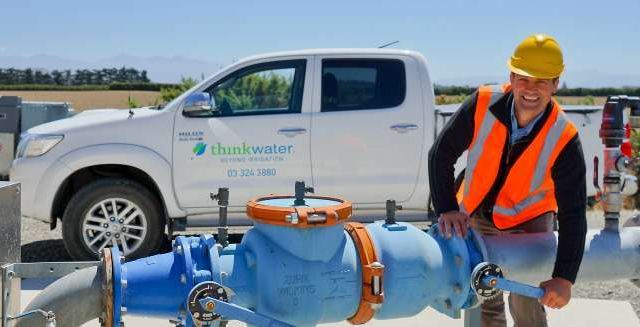Home > Solutions and Services > Service and Maintenance > Back Flow Prevention
Back Flow Prevention
At Think Water Canterbury proper maintenance of backflow preventers and cross-connect systems is vital to ensuring the safety of the your drinking water system.

What is Backflow?
Backflow is an unwanted reverse flow of contaminated water into the main pipeline or plumbing system from a residential or commercial plumbing system. Cross-contamination will occur when the contaminated water comes into contact with the main potable water supply. To stop a cross connection a suitable backflow prevention device needs to be installed. Cross contamination is extremely hazardous to the main supply of water, so this is extremely important to be done correctly.
Our backflow prevention services include:
- Supply and installation
- Testing and certification
- Valve protection and vandal deterrents
- Maintenance and repairs
- Audits and reports
- Backflow prevention system design
Think Water Canterbury's backflow prevention methods can vary according to the industry, site and job. We are qualified and experienced in backflow prevention so can advise you on the best method of backflow prevention for your situation.
Our backflow prevention methods include:
- Air gap
- Break tank
- Double check valve
- Reduced pressure zone device
- Pressure vacuum breaker
- Single check valve – Testable
- Double check valve detector assembly
- Reduced pressure zone detector assembly
- Single check valve detector assembly
Some properties that may require a backflow prevent test include:
- Restaurants
- Cafes
- Shops
- Unit and apartment complexes
- Medical and dental facilities
- Swimming pools
- Residential properties
- Caravan parks
- Production / manufacturing facilities
- Piers, docks, and waterfront facilities
Annual Testing Services
Think Water Canterbury can look after your testing and certification requirements. Each backflow prevent device is required to be tested and certified annually or after any repairs have been done to the pipework. We can also prepare the documentation to lodge with the local council. Maintenance or repair work will also be carried out if required.
Hazard Rating of Sources
The hazard rating of the source of contamination will determine what type of backflow preventions device is required. For example, a hose tap that is located in a trash bin washing bay on a commercial or industrial property has a high hazard rating, therefore you will need to install a RPZ backflow device. Another example is a residential property that has a rainwater tank below ground which is connected to the water supply will need a medium hazard rated device which could be a double check valve. Think Water Canterbury can advise you on the required backflow prevention device depending on your hazard rating.
- Devices are required for the following to protect against potential contamination:
- Irrigation systems
- Vehicle washing bays
- Fire hose reels
- Fire systems
- Cooling towers
- Grease traps
- Rubbish bin washing bays
- Chlorinators
- Underground rainwater tanks
Pros and cons of Back Flow Prevention
Whether your business is big or small, conducting effective maintenance on your machinery is essential. But which is the right maintenance strategy for you? That’s a big question, because choosing the wrong one can be catastrophic to you, your business and your staff.
Enquiry
Get in touch today and one of our professional staff will get back to you.






